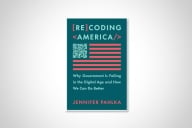You have /5 articles left.
Sign up for a free account or log in.
(Hat-tip to Sarah Pavlus for highlighting this one.)
Sometimes I remember that we academics read differently than most people.
Bloomberg news yesterday ran a story about the University of Phoenix, in which it reported drops in quarterly earnings and share price as a function of a drop in enrollment. The headline reflected net income and enrollment. But the real news was buried in the fifth paragraph:
The company is also expecting to receive a draft report from its accreditor, the Higher Learning Commission, said Gregory Cappelli, Apollo’s Chief Executive Officer, during a conference call with analysts and investors. He said the company believes it will be placed on notice, which would require follow-up reports and action.
Whoa. In my world, that’s stop-the-presses news. (Okay, I’m old. What’s the internet version of stop the presses?) The Higher Learning Commission of the North Central Association is planning to place the country’s largest for-profit college on notice? And it’s likely enough that the CEO was comfortable revealing it on a conference call with investors?
That’s huge. That’s way more interesting than this week’s share price.
Stock prices fluctuate; it’s what they do. But a potential loss of accreditation -- which would come after “notice,” admittedly, but that’s what the “notice” is about -- would mean a loss of eligibility for Federal financial aid. That’s the lifeblood of Phoenix’ operation. It literally would not survive without students having access to that money.
The rest of the story returns to the stock price, which, to my mind, is a grand exercise in point-missing. If Phoenix were to lose its accreditation, this week’s stock price would quickly become a memory.
The story doesn’t give a reason for North Central’s prospective notice; we’ll have to wait for the folks who understand higher ed to get in there and find that out.
In the for-profit world, the demarcation between the regionally accredited and the rest is effectively the demarcation between major and minor league. The few who have attained regional accreditation aren’t shy about it; they treat it as validation, which, in a way, it is. And it’s a hunting license of considerable import. (That was why certain for-profits spent much of the early 2000’s buying the accreditations of failing nonprofits, essentially treating them as taxi medallions. I’m told that the accreditors eventually clamped down on that, which is all to the good.)
My hunch is that the for-profits have peaked. Their model brought certain efficiencies -- some thoughtful, some ruthless -- but ultimately couldn’t get past the same issues that plague traditional higher education. Convenience and occupational relevance are valid selling points, but they’re relatively easily copied. And it’s hard to compete on price when one sector is both taxed and unsubsidized while the other is subsidized and untaxed. Now that many publics offer online programs with vocational relevance, and at much lower cost to students, I’d expect to see some panic in the for-profits. And since for-profits have neither endowments nor appropriations to cushion the blow from lost tuition, the fall could be hard.
There’s much more to this story, and I look forward to seeing it unfold. I just hope that future reports don’t bury the lede quite so egregiously.



